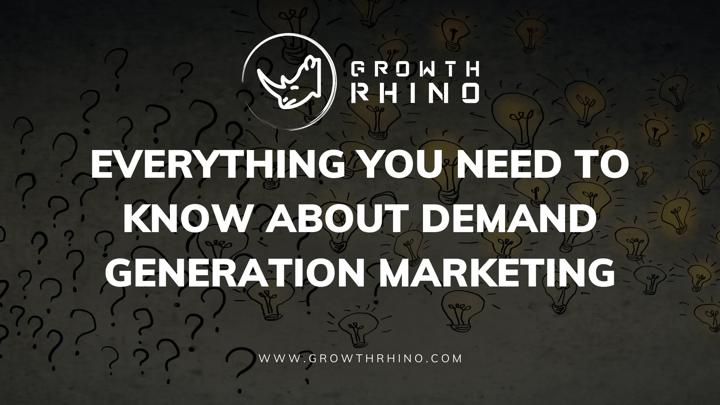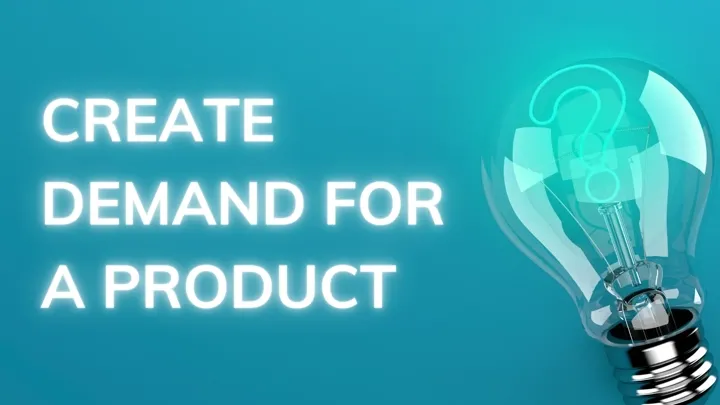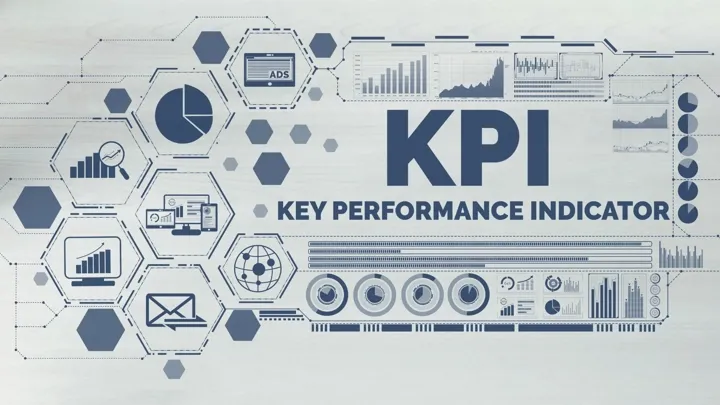
The sole motive behind marketing your product or service is to solve a specific customer problem. When the audience knows you have the solution for their problem, your product and service by default have a high demand.
On the flip side, when you detect a problem that your customer doesn’t know about but you are sure you can solve, you need to develop strategies and tactics to handle it. These strategies and tactics are known as demand generation tactics. They help your audience understand their pain points and avail the solutions to get over them. This way, you shift their perspective to what you do and what problems you solve while helping them recognize their need for your offer, which will eventually create a demand for your products and services. It not just streamlines the entire marketing process but also solves the identified problem.

Today, the biggest problem that any start-up or established company faces is demand generation. In this article, we will be highlighting everything that can help you generate demand for your products and services. Let’s begin with the basics.
What Is Demand Generation Marketing?
Demand generation marketing is a modern methodology wherein brand storytelling is merged with the potential needs of the customers. It is a multistep process that covers your marketing and sales initiatives by cultivating interest in your products and services and building a healthy lead pipeline.
It initially puts forward and explains the various problems and potential hindrances faced by the target audience in their day-to-day life. After presenting the issues, the usefulness of the brand comes in, which is presented as the solution to those particular problems. This kind of brand awareness is created through extensive marketing and sales processes.
Demand generation is a thorough process that needs a successful demand generation strategy to record every step of a customer’s journey. From the lead interacting with the service for the first time to the lead being converted into a customer, every step is recorded to ensure the best demand generation services to the customers.
Why Is Demand Generation Important?
Demand generation is vital for any marketing team that works on the creative side and concentrates mainly on attracting customers through problem-solving. It is a marketing strategy that does not entirely focus on selling a particular solution. Instead, it focuses more on creating awareness regarding the need for a product or service and introducing the audience to your solutions. The sole purpose is to make them understand how your product or service can change their business—or their life, for that matter—for the better. If you can successfully instill this thought in them and approach them accordingly, the chances of your product or service getting sold are significantly higher. If you know how to create demand for a product, the next steps would be much easier for you.
For every marketing process to run smoothly, you need a solid pipeline of positive customers. And demand generation works as a base for this pipeline. This method concentrates on very specific points, such as the following:
- serving the customers’ needs directly
- creating brand awareness and cultivating interest before making the actual sales pitch
Since it follows a specific pathway, every point of genuine contact is reached, which helps in increasing the leads that come in through the funnel. It also develops a good base of the target audience.
Demand generation extensively helps create cohesive outreach campaigns for sales and marketing processes, creating an exceptional experience for the people who interact with your company.
Demand Generation vs. Lead Generation: What Is the Difference?
Even though both expressions might look similar due to the term “generation” in them, they are pretty different from each other. The only similarity they share is that both have a collective goal of developing the business by leveraging sales and attracting customers. What differentiates them are the ways that these processes are carried out and their immediate results.
Check out these points explaining the differences between demand generation vs. lead generation.
Lead Generation:
Lead generation is a commonly known process, mainly undertaken by the company’s marketing department, which includes exchanging contact details for required content. This contact information is collected with the sole purpose of leveraging the various processes held in the marketing and sales department. The methods used in lead generation are a couple of steps forward-looking. It assumes that the target audience is already aware of the problem and its solution and is seeking the right service or product. It also assumes that the target audience is on the firing line and is just a step behind analyzing and using the provided service.

Lead generation mainly uses gated content for basic transactions; hence it becomes easy to derive the contact information from the prospects.
Demand Generation:
Demand generation, on the other hand, is a process that concentrates on creating brand awareness before selling the following product or service. It promotes the company in a way that reflects why the product or service offered is important and needed to solve the customers’ problems. It also serves as a source of valuable information.
Marketing demand generation is undoubtedly a process that takes time. It mostly involves multiple steps where you need to create awareness and make your audience’s interest grow in your company constantly to crack a deal finally. This ensures that your success rate is not hampered and chances of conversion are kept at bay. If you keep the interest going within the audience, they will come back to you when needed. All you need to do is create an ever-lasting demand for your product or service. You can do this by explaining the final result to your audience, educating them about the problems they are facing and how investing in your product or service can help them.
Since demand generation mainly focuses on ungated content, it takes time. But on the positive side of things, the goal is reached more accurately as you create strong awareness and access a larger crowd.
How to Build Successful Demand Generation Campaigns:
Building successful demand generation campaigns can be challenging and time-consuming. But if you take the right steps, this method can bring you and your company a lot of success. Here is a list of steps that a demand generation process follows for a smooth and successful campaign.
1) Clarify Your Goals:
Having a clear goal should be the goal itself of every campaign. Goals and objectives help you stay on the right path, which empowers various other processes to reach that goal. The same goes with demand generation, where you need to be SMART with setting every goal. SMART breaks down in the following way:

- Specific: Being specific with what you want to achieve is very important for demand generation. It is always better to stay on one path and focus on one goal rather than wandering across to reach multiple goals at a time. Instead of “improving sales,” concentrate on “boosting the sales of a particular product.”
- Measurable: To reach a certain goal, you must determine a measurable set of metrics that will help you reach that goal with accountability. Metrics allow you to track every step and progress alongside making improvements on the way.
- Attainable: By being attainable, it means that you need to set realistic dreams. Every company would want to boost their sales by 1000%. But that is quite impossible and unattainable. Hence, setting realistic goals help you to stay on a path and not divert away from it.
- Relevant: As a team or department, when you set your goals, make sure they are relevant to the collective company objectives. Try not to intrude into other departments’ goals, and stay aligned with what you have set and want to achieve.
- Time-based: When you set a particular goal, it will have multiple components to accomplish. Set a strict deadline for all those components so that everything is in sync. Collectively, this helps you to reach your goals quicker and has a higher chance of success.
A primary step in achieving goals for demand generation is that both the sales and the marketing teams should work in harmony and synchronization. This enriches both departments, and the output is better when two hands align.
2) Identify Target Audience:
One of the first steps towards launching a demand generation campaign is to identify the target audience. If you have no idea about whom to reach with your products and services, you will never be successful with your campaign. You need to extensively study the audiences’ behavior, goals, the various problems they face, and their online presence. Availability of all these metrics will help you create content accordingly and reach your target audience effectively.
It is one of those demand generation activities that gives you time and versatility. Even if you are new to the market or have not assessed your targets yet, being an experienced company, you do not need to worry about falling behind. You can start again when you feel it is suitable by studying customer behavior and building a solid structure based on it for further steps.
3) Create a Demand for Your Goods or Service by Creating a Need for It:

In most scenarios of demand generation, the customer is unaware of the aim behind you selling your products or services. To generate demand, you need to reach out to your customers and explain why investing some money in exchange for a solution is beneficial to solve their challenges. You can take your product or service as an example and explain how it helps them solve their problems. Of course, you must be presenting all this in a professional and final way.
4) Produce Educational Content:
This is the basic step you need to take towards creating a demand. You must create content that extensively educates and explains to the customers the challenges they are facing daily. Share this content through various social media platforms like YouTube, Facebook, and many others. This would attract more audiences.
Your created content should completely educate the people about all the points that your company is concerned with. The first point in the content should be about the problems the customers face daily. Then you would need to explain how treating these problems are important for their success and development in the market. Finally, promote your brand and explain how it can help them overcome these challenges. Include various insights and records from past ventures to showcase your caliber.
5) Distribute a Free Report:
People understand data and statistics better. Hence, when you bring out content that explains something to the masses, share a free report containing all the data and statistics of how your company has performed and helped others in recent years. This report will boost your visibility and promote your brand in a way that will leave a long-lasting impression on the audience.
Initially, distribute this educational content for free, which would create some trust between you and your customers. In this way, awareness regarding your brand and the work it does will be at its peak.
6) Find the Right Product for the Right Market:

Now that you have introduced and explained all the problems to the audience, it is time to develop resources for yourself. These resources can help you filter the existing market, research in-depth, and understand general customer behavior while giving you more insights into your audience. You need to be confident about the content you create, and it should rightly pique the interest of the audience and be attracted to what you do and provide. For performing demand marketing, all you need is reciprocation insights. This means you would need extensive data on how the audience behaves toward your content and the conversion rate achieved through that particular content.
7) Offer a Free Tool to Your Audience:
Create a tool that can analyze customer behavior and provide you statistics accordingly. It will be beneficial for both you and your audience. While your audience gets some extensive information about the way you perform and offer your services, you would know more about how many people are interested in your product and understand more about their requirements. You can also get data related to the pain points your audience is checking out the most and develop strategies accordingly to serve them better.
8) Make Use of a Lead Magnet:
Creating a full-blown free tool can often be challenging and might not give you the best results. If this idea does not work for you, you can use a lead magnet to do similar tasks for you. The lead magnet tool can be anything from a quiz, an e-book, a free checklist, and many more. As soon as your audience reaches forward to access this content, they need to enter some details. As they enter this information, it gets stored as valuable data in your database. This information helps you study your audience and their needs better, and you can further curate your services accordingly.
9) Increase Brand Awareness:
Once the audience is aware and educated about the various challenges they face in day-to-day life, they need to trust your brand and the solutions you provide to your customers. You need to show your value so people will be interested enough to choose your product or service. By reaching out to a targeted and well-informed audience, you make your work easier. Since they know about the problem, you can come into play and introduce your products or services to solve those problems. If you succeed in convincing them, the chances of them getting converted into your customers increase.
10) Develop a Strategy for Social Media:
Today, social media is a powerful platform to attract customers through suitable advertisement and content uploading. It undoubtedly provides a huge opportunity to promote and create awareness about your brand. All you need is a proper social media marketing strategy that provides enough exposure to your products and services. Building a trustworthy relationship with your target audience on social media creates an unmatched demand for your product or service. Moreover, the chances of conversion from a mere audience to a customer are substantially high.
11) Invest in Guest Posting and Blogging:
Blogging is one of the best ways of generating products or service demands. It is a raw form of content and something that can turn out a lot of demands. You need to curate content to add and inform about the value you have created to build a trustworthy relationship with the audience. You can also partner with other brands to increase the visibility and reach of your content, which explains why your products are the best for solving a particular problem.

Guest posting is another method that can be quite beneficial, but in this case, you need to partner with other companies in the same niche. It immensely increases the exposure of your brand. If you instill some authority through your content, the chances of collaborating with established publications go higher. Eventually, having a constant presence among the established publications can increase your brand awareness.
How to Measure the Success of Demand Generation Campaigns:
There are certain points through which you can measure how successful your demand generation campaign has been.
1) Define KPIs:
To know how successful your efforts were in leading the demand generation campaign, you need to define your KPIs, or key performance indicators. Keep in mind that the KPIs you choose should always be relevant to your marketing goals. Here are some key performance indicators that might apply to your demand generation campaign:

- Lead magnet downloads
- Cost per lead
- Website traffic
- Customer acquisition cost
- Free tool sign-ups
KPIs serve to bridge the existing gap between the efforts you put into demand generation and the direct growth of the business. Once this step is done, you can then embed these KPIs into customer journey reports. This gives you a clear idea of the highest returning areas within your investment. Moreover, you can also curate those areas separately to attain even more returns to aid other areas of the demand generation campaign.
2) Track Data over Time:
If you manage to get a grip on the response tracked from your audience, you can then use that knowledge to attract better leads from verified sources. Record and study the conversion rates and how they fell into place when you used a particular strategy. Try to relate those conversion statistics with the strategy you use for targeting specific groups.
4) Adjust as Needed:
As you track the data and insights over time, you will know how your audience is behaving to the content you are publishing alongside the overall conversion rates. As you keep on recording them, make changes to your demand generation tactics. This should happen while the campaign is running. This ensures that your tactics are not outdated and are in line with how your audience and their behavior change towards your services and products.
Conclusion:
Now that you know what demand generation marketing is and how it is done, it is time to incorporate it into your sales and marketing processes and scale higher. The process completely depends on how well you educate your audience regarding the challenges they are facing and how your brand is the best choice to collaborate with and overcome that particular problem.
As you move down the sales funnel, the chances of conversion increase if you have successfully pitched your ideas. Alongside maintaining a steady stream and publishing meaningful content, you need to look after the social media publications and record the insights. These insights would provide you with valuable information regarding the reach of your content and the overall brand awareness on that particular social media platform.
Companies and businesses are already using these methods. Now it’s your turn to make the most of it. Just follow the steps outlined above, develop deeper bonds with your customers, and aim to serve.
